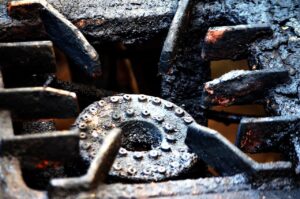A refrigerator is an essential appliance in our daily lives. It plays a crucial role in keeping our food fresh and safe for consumption. Without a functional refrigerator, we would have to rely on other methods of food preservation, such as canning or drying, which may not be as effective in maintaining the quality and safety of our food.
The importance of a functional refrigerator cannot be overstated. It helps to slow down the growth of bacteria and other microorganisms that can cause foodborne illnesses. It also helps to preserve the nutritional value of our food, as many vitamins and minerals are sensitive to heat and can be lost during cooking or other forms of food preparation.
Key Takeaways
- A functional refrigerator is important for keeping food fresh and safe to eat.
- Common causes of a refrigerator not running include power source issues, thermostat problems, and compressor or fan malfunctions.
- Always check that your refrigerator is plugged in and the power source is working properly before troubleshooting other issues.
- Cleaning and maintaining the condenser coils can improve the efficiency of your refrigerator.
- If you are unable to fix the issue yourself, it may be time to seek professional help from a technician.
Common Causes of a Refrigerator Not Running
There are several common reasons why a refrigerator may stop running. One of the most common causes is a power outage or a tripped circuit breaker. In such cases, it is important to check if the refrigerator is plugged in properly and if the power source is working correctly.
Another common cause is a faulty thermostat. The thermostat controls the temperature inside the refrigerator and if it is not functioning properly, it may not be able to maintain the desired temperature range. It is important to examine the thermostat and adjust the temperature settings accordingly.
Checking the Power Source: Is Your Refrigerator Plugged In?
Before diving into more complex troubleshooting steps, it is important to check if your refrigerator is plugged in properly. Sometimes, due to accidental unplugging or movement of the appliance, the power cord may become loose or disconnected from the outlet.
To check if your refrigerator is plugged in properly, first, locate the power cord at the back of the appliance. Follow the cord until you reach the outlet. Ensure that the plug is securely inserted into the outlet. If it appears loose, unplug it and plug it back in firmly.
It is also important to ensure that the power source is working correctly. You can do this by plugging in another appliance, such as a lamp or a phone charger, into the same outlet to see if it is receiving power. If the other appliance works, then the problem lies within the refrigerator itself.
Examining the Thermostat: Adjusting Temperature Settings
The thermostat is responsible for regulating the temperature inside the refrigerator. If it is not functioning properly, it may not be able to maintain the desired temperature range, which can lead to food spoilage.
To examine the thermostat, locate it inside the refrigerator. It is usually located near the top or on the side wall. Check if it is set to the correct temperature range. The ideal temperature range for a refrigerator is between 35°F and 38°F (1.7°C and 3.3°C).
If the thermostat is set to the correct temperature range but the refrigerator is still not running, it may be faulty and need to be replaced. It is best to consult the manufacturer’s manual or contact a professional technician for assistance with replacing a faulty thermostat.
Inspecting the Condenser Coils: Cleaning and Maintenance
The condenser coils are responsible for removing heat from inside the refrigerator and releasing it into the surrounding environment. Over time, these coils can become dirty and clogged with dust, debris, and pet hair, which can hinder their ability to dissipate heat effectively.
To inspect the condenser coils, first, unplug the refrigerator and locate the coils at the back of the appliance. Use a vacuum cleaner or a soft brush to gently remove any dirt or debris that may have accumulated on the coils. Be careful not to damage or bend the coils during this process.
Regular cleaning and maintenance of the condenser coils are essential to ensure proper functioning of the refrigerator. It is recommended to clean them at least once every six months or more frequently if you have pets or live in a dusty environment.
Troubleshooting the Compressor: Testing for Problems

The compressor is the heart of the refrigerator. It is responsible for compressing and circulating the refrigerant, which is essential for cooling the interior of the appliance. If the compressor is not functioning properly, the refrigerator may not cool properly or may not run at all.
To troubleshoot the compressor, first, unplug the refrigerator and locate the compressor at the back of the appliance. Check if it is warm to the touch. If it is excessively hot or making unusual noises, it may be a sign of a faulty compressor.
If you suspect that the compressor is faulty, it is best to contact a professional technician for further diagnosis and repair. The compressor is a complex component and should only be handled by trained professionals.
Evaluating the Evaporator Fan: Checking for Damage
The evaporator fan is responsible for circulating cold air throughout the refrigerator, ensuring that all areas are evenly cooled. If the fan is not functioning properly, certain areas of the refrigerator may become warmer than others, leading to uneven cooling and potential food spoilage.
To evaluate the evaporator fan, first, unplug the refrigerator and locate the fan inside the freezer compartment. Check if it is spinning freely and if there are any signs of damage, such as broken blades or excessive noise.
If you notice any damage or if the fan is not spinning properly, it may need to be replaced. It is best to consult the manufacturer’s manual or contact a professional technician for assistance with replacing a faulty evaporator fan.
Understanding the Defrost Timer: Replacing or Repairing
The defrost timer controls when and how often the refrigerator goes into defrost mode to prevent ice buildup on the evaporator coils. If the defrost timer is faulty, it may not initiate defrost cycles properly, leading to excessive ice buildup and poor cooling performance.
To understand the defrost timer, consult the manufacturer’s manual or search for specific instructions for your refrigerator model. It is important to follow the recommended steps for replacing or repairing the defrost timer, as it can vary depending on the make and model of your refrigerator.
Signs of a faulty defrost timer include excessive ice buildup in the freezer compartment, poor cooling performance, and unusual noises coming from the refrigerator. If you notice any of these signs, it is best to consult a professional technician for further diagnosis and repair.
Dealing with Faulty Door Seals: Fixing Air Leaks
Faulty door seals can lead to air leaks, which can cause the refrigerator to work harder to maintain the desired temperature and increase energy consumption. It can also lead to uneven cooling and potential food spoilage.
To deal with faulty door seals, first, inspect them for any signs of damage or wear. Check if they are properly aligned and if there are any gaps between the seal and the refrigerator door. If you notice any issues, it may be necessary to replace the door seals.
Replacing door seals can be a complex process and may require professional assistance. It is best to consult the manufacturer’s manual or contact a professional technician for guidance on replacing faulty door seals.
Seeking Professional Help: When to Call a Technician
While many common refrigerator problems can be troubleshooted and fixed by following the steps mentioned above, there are instances where it is necessary to seek professional help and call a technician.
If you encounter complex problems that require specialized knowledge or tools, it is best to leave the repairs to professionals. Attempting to fix complex issues without proper training can lead to further damage to your refrigerator and may void any warranties or service agreements you have.
Professional technicians have the expertise and experience to diagnose and repair complex refrigerator problems efficiently and effectively. They also have access to specialized tools and replacement parts that may not be readily available to consumers.
In conclusion, a functional refrigerator is essential for keeping food fresh and safe for consumption. By understanding the common causes of a refrigerator not running and how to troubleshoot and fix them, you can ensure that your refrigerator is always in good working condition. However, if you encounter complex problems, it’s best to seek professional help to avoid further damage to your refrigerator. Regular maintenance and proper care are key to ensuring the longevity and optimal performance of your refrigerator.
If you’re experiencing issues with your refrigerator not running, troubleshooting and fixing the problem can save you time and money. In a related article on 911 Appliance’s blog, you can find helpful tips and step-by-step instructions to diagnose and resolve common refrigerator issues. From checking the power supply to examining the condenser coils, this article provides valuable insights to get your refrigerator up and running again. Don’t let a malfunctioning refrigerator spoil your food or disrupt your daily routine. Visit the 911 Appliance blog for expert advice on troubleshooting and fixing refrigerator problems.
Can Door Seal Troubles Cause the Refrigerator Not to Run Properly?
Identifying refrigerator door seal issues is crucial in ensuring the proper functioning of your appliance. When the door seal is compromised, it can lead to air leaks, causing the refrigerator to work harder to maintain the right temperature. This can result in energy inefficiency and potential food spoilage.



